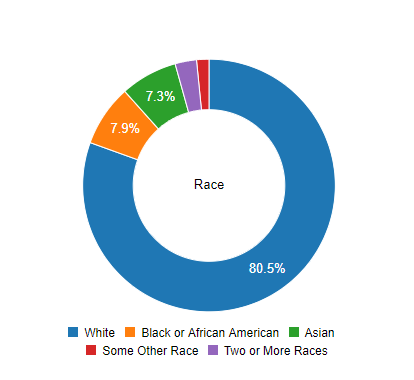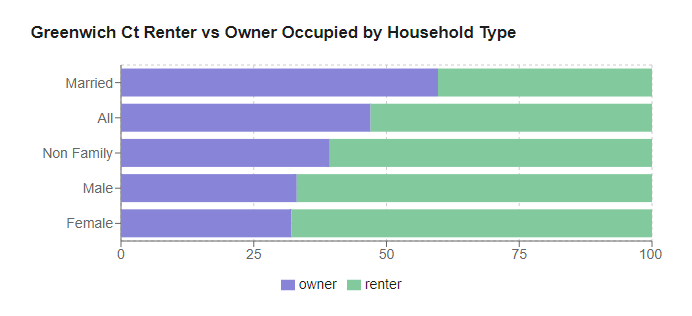Let’s start by saying the headline above is in no way facetious. Almost certainly, Reader, your boss has a 068xx ZIP code from Greenwich, CT.
Greenwich (pronounced “GRENN-itch”), Conn., is a town of 62,000 people and 16 yacht clubs. It is the wealthiest town in Connecticut and vies with New York City’s other exurbs and Silicon Valley redoubts for top honors nationwide. The closest thing to “industry” along this stretch of Long Island Sound in the Nutmeg State’s southwest corner is Blue Sky Studios, which does computer animation for Disney, although there might well be more florists per capita in Greenwich than anywhere else in America.
The majority of people residing in Greenwich are in finance, the professions or education, according to City-Data.com, and about a quarter of them eschew the excellent public schools and send their children to private academies. “Top executive” is one of the most frequently cited occupations, as is “other management”. So if your boss doesn’t live there, it’s very likely your boss’s boss does. And, considering that Greenwich’s environs are also dense with financial managers and other finance specialists, it’s even more likely that the portfolio managers of the institutional investment firms that own enough of your company to be listed on its annual proxy statement know what the Manhattan skyline looks like from Round Hill.
So if you didn’t get a year-end bonus, it was because the Greenwich stole Christmas. (Shame on you if you didn’t see that coming.)
Who Lives There?

There’s no sugar-coating it: Greenwich is glaringly white, like 80%. There are more than three times as many people of Asian origin than there are African-Americans. Japan, incidentally, is the largest source of immigrants to the town. The United Kingdom is second. There is a significant Latino population due to one neighborhood in the southwest corner that abuts the largely Spanish-speaking town of Port Chester, N.Y.
That said, Greenwich is not as WASPy as its reputation. It is far more Italian and Irish than you might expect. Most non-Catholic residents declare no religion — far more than identify as either mainline or evangelical Protestant. While there is some Jewish presence there, that community is far more concentrated in Stamford to the northeast and Westchester County, N.Y, to the southwest.
The majority of Greenwich’s population is comprised of college graduates. It is also older than most; the average age of 42.8 years is significantly higher than Connecticut’s 39.2 and the U.S.’s 37.8. Most residents — 52% — are female. We’re not sure what accounts for that, but the divorce lawyers’ dictum, “give him the pension, give her the house” might have something to do with it.
Politically, Democrats have the edge in Greenwich, as they do throughout Connecticut. That said, many of these voters are persuadable given the choice of an old-school Republican candidate. Mitt Romney and George W. Bush both did very well in Greenwich’s precincts. Donald Trump, not so much.
What do you Mean by ‘Greenwich’?
We recently wrote about what an imprecise term “Los Angeles” is. While Greenwich isn’t anywhere near the scale of the “72 suburbs in search of a city,” it does have its internal peculiarities.
There are seven Census-designated places comprising the Fairfield County town: waterfront Byram, artsy Cos Cob, historic Glenville, moneyed Old Greenwich, primly suburban Pemberwick and fame-soaked Riverside, as well as Downtown Greenwich. Between them there are five ZIP codes and four MetroNorth commuter train stations. When you stick Greenwich under a microscope, you’ll find the CPDs subdivided into no fewer than 30 neighborhoods. That Greenwich neighborhoods have an average population of barely 2,000 tells you all you need to know about population density.
Depending on where you look through these 48 square miles, home prices range from exorbitant to surreal. The median value of a housing unit is upward of $1.1 million these days, or roughly four times the Connecticut average. And that’s if you’ve bought-and-held. If you’re looking to move to Greenwich today, you’re talking table stakes of $1.6 million.

The gap between existing and asking rents are similarly stark. Roughly one-third of Greenwich units are leased and, while the median gross rent is $1,322, the asking rent for vacant units is $2,440.
While the vast majority of Greenwich homes — roughly 17,000 — are single-family, there is some room for multifamily dwellings. About 3,500 residences are located in structures containing five or more units, the majority of which are in structures containing more than 20.
And while residential real estate can be an exceedingly seasonal business around the country, it’s not as cut-and-dried in Greenwich. If you don’t sell by the end of August, you don’t necessarily have to wait until April to find a buyer.
“The real estate market continues to see sales as the winter season approaches,” according to an early December article by Ken Edwards at the Connecticut Post. “[S]howings will taper off while the buyer pool gets ready for the holidays. The serious buyers will be out, however. Last week our local Greenwich MLS reported 11 real estate closings totaling over $21 million. The mix of sales included eight single-family homes, two condos and one multi-family home in Pemberwick.”
Greenwich Time reports that, in response to strong demand and in contrast to the town’s resistance to change, new apartments and condos are in the pipeline.
Even so, even an enclave as prosperous as Greenwich isn’t completely immune from the softening of the real estate market throughout the New York City gravity well.
Berkshire Hathaway Home Services’ Mark Pruner recently explained to an audience, that a local house that sold for about $9 million ten years ago would sell for $7 million now.
“That’s still someone spending $7 million on a house in Greenwich,” the Greenwich Free Press quoted Pruner as saying. “Too often we focus on the hole and not the doughnut.”
Greenwich at a Glance
- Population: 62,000 (2013), little changed since 1970
- Unemployment rate (2019): 2.9%, compared with a national average of 3.7%
- Average household income (2017): $138,492, compared with a national average of $48,150
- Cost-of-living index: 172.3 (2019), compared with a national average of 100
Source: City-Data.com


